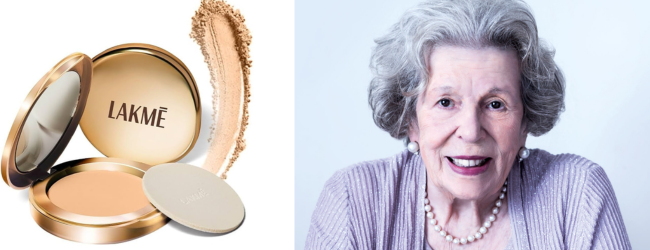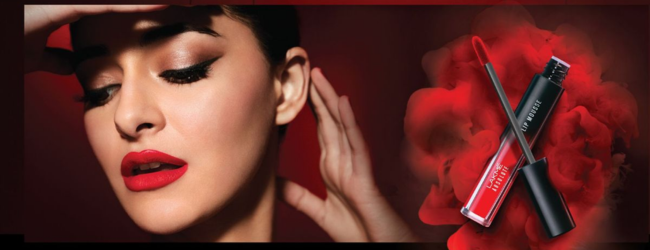Table of contents
- Who is the Lakme Founder?
- The Vision: Why Lakmé Was Created
- Timeline of Lakmé’s Growth
- Growth Strategy: What Made Lakmé a Success?
- What Key Decisions Fueled Lakmé’s Growth?
- Challenges Simone Tata Faced
- Leadership Style of Simone Tata
- Impact & Legacy of Lakmé
- Simone Tata’s Influence on Indian Business
- Lessons from Lakmé’s Founder
- Table: What Made Simone Tata a True Entrepreneur?
- Conclusion
- Frequently Asked Questions (FAQs)
Lakme founder stories are more than business tales—they are powerful lessons in vision, innovation, and resilience. This article brings you the incredible journey of Simone Tata, the woman behind India’s most iconic beauty brand. From a small idea sparked by a national need to a household name valued in crores, discover how Simone built Lakmé into India’s very own cosmetics empire.
Who is the Lakme Founder?

Simone Tata, a Swiss-born visionary, is the woman credited with founding and shaping Lakmé, India’s first cosmetic brand tailored for Indian skin tones and beauty needs.
- Name: Simone Naval Tata
- Nationality: Swiss (naturalised Indian citizen)
- Company Founded: Lakmé Cosmetics (1952)
- Role: Chairperson of Lakmé and later a Director in Tata Industries
- Known For: Establishing India’s first indigenous beauty brand
The Vision: Why Lakmé Was Created
In the early 1950s, India lacked a reliable, local beauty brand. Women were spending a lot on imported cosmetics, which weren’t suited for Indian skin tones or the climate. Prime Minister Jawaharlal Nehru requested the Tata Group to address this gap.
Simone Tata, who joined the Lakmé project in 1961, became its driving force.
Key Objectives:
- Create a Made-in-India beauty brand
- Make cosmetics affordable and high-quality
- Cater specifically to Indian skin tones and preferences
Timeline of Lakmé’s Growth
| Year | Milestone |
|---|---|
| 1952 | Lakmé founded as a Tata subsidiary |
| 1961 | Simone Tata joins Lakmé |
| 1973 | Becomes Chairperson of Lakmé |
| 1996 | Tata sells Lakmé to Hindustan Unilever Ltd (HUL) |
| Today | Valued at over ₹1,000 crore+ |
💡 Pro Tip: If you want to start a Business but have too many doubts, connect with a Business expert from Boss Wallah for guidance – Check Out
Growth Strategy: What Made Lakmé a Success?
Product Innovation:
- Created India-specific makeup shades and skincare products
- Launched iconic items like Lakmé lipstick, kajal, and compact powders
Affordable Luxury:
- Positioned as an aspirational yet accessible brand
- Priced reasonably for middle-class Indian consumers
Nationwide Reach:
- Expanded retail presence from metros to tier-2 cities
- Built strong brand trust via TV ads and endorsements
What Key Decisions Fueled Lakmé’s Growth?
- Local manufacturing for cost control
- Focused R&D on Indian skin types
- Celebrity endorsements to build aspirational value
- Distribution through salons, later expanded into standalone Lakmé Salons
Challenges Simone Tata Faced
| Challenge | Response |
|---|---|
| Foreign brand competition | Professionalised management & marketing teams |
| Lack of cosmetic awareness | Launched campaigns to educate consumers |
| Operational issues | Professionalized management & marketing teams |
ALSO READ | Happilo Founder: Meet Vikas Nahar, Driving Force Behind Healthy Snacks
Leadership Style of Simone Tata
- Empathetic & Visionary: Focused on women’s needs
- Hands-On Execution: Deep involvement in product development and branding
- Collaborative: Worked with marketing, design, and R&D teams equally
Impact & Legacy of Lakmé
🌟 Lasting Achievements:
- Paved the way for Indian women to embrace makeup without shame
- Gave rise to India’s first cosmetics giant
- Inspired other Indian beauty brands like Lotus, Biotique, and Sugar Cosmetics
📊 Lakmé’s Current Presence:
- 500+ Lakmé salons across India
- Thousands of retail outlets
- A part of Hindustan Unilever Limited (HUL), one of India’s largest FMCG companies
Simone Tata’s Influence on Indian Business

- Became the Director of Tata Industries after Lakmé’s success
- Mentored several Tata Group leaders
- Stands as one of India’s earliest women business leaders
Lessons from Lakmé’s Founder
🧩 Simone Tata’s Key Qualities:
- Visionary: Saw a gap and filled it with purpose
- Resilient: Took on challenges in a male-dominated industry
- Innovative: Created products that didn’t exist before in India
ALSO READ | Snitch Founder: Meet Entrepreneurial Genius Behind Indian Fashion Brand
Table: What Made Simone Tata a True Entrepreneur?
| Trait | Example |
|---|---|
| Drive | Led Lakmé from a small venture to a national brand |
| Innovation | First Indian brand to match makeup to Indian skin |
| Leadership | Built a women-centric team & loyal customer base |
| Execution | Streamlined production, marketing & growth strategy |
| Legacy | Created a platform for women-centric products & careers |
Need Expert Guidance?
Starting a business can be challenging, but you don’t have to do it alone! At Boss Wallah, our 2,000+ business experts are ready to provide valuable insights and guidance. Whether you need help with marketing, finance, sourcing, or any other area of any business, our business experts are here to help you succeed
Confused about Which Business to Start?
Want to start your own business but unsure which one to choose? Explore Boss Wallah, where you’ll find 500+ courses by successful business owners, featuring practical, step-by-step guides on starting and growing various businesses.
Find your perfect business idea today
Conclusion
Simone Tata’s journey as the Lakme founder is a shining example of vision, determination, and execution. She didn’t just create a beauty brand; she changed the perception of beauty in India. Lakmé continues to lead, innovate, and inspire—a legacy built by a woman with a mission.
Frequently Asked Questions (FAQs)
- Who is the founder of Lakmé?
Simone Tata is the founder behind Lakmé’s success. - When was Lakmé founded?
Lakmé was established in 1952. - Why did the Tatas start Lakmé?
To provide affordable Indian cosmetics and reduce reliance on foreign products. - Is Lakmé still owned by Tata?
No. It was sold to Hindustan Unilever Ltd in 1996. - What are Lakmé’s most popular products?
Lakmé Kajal, Lipstick, Compact Powder, and Foundation. - How many salons does Lakmé have in India?
Over 500+ Lakmé Salons nationwide. - What was Simone Tata’s role in Tata Group?
She later became a director at Tata Industries. - Is Lakmé an international brand?
It’s an Indian brand, now under HUL, and has global recognition. - What made Lakmé successful?
India-specific products, affordable pricing, and smart branding. - Where can I buy Lakmé products?
In retail stores, Lakmé Salons, and online platforms like Nykaa, Amazon, and Lakmé India.



